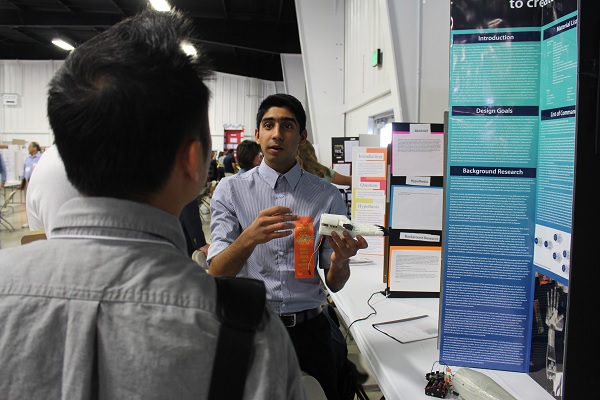Contribute
| Nilay Mehta Creates 3D Printed Robotic Arm For $260 |
Press Release
08/06/2015
When Nilay Mehta, a high school student in Irvine, California, set out to research prosthetics for a science fair project, he was flabbergasted by how costly prosthetic limbs are, often making them inaccessible to those who need them.
In an effort to alleviate the issue, the 17-year-old made the construction of a high-functioning limb at as low a cost as possible his science project’s singular mission. Over the course of four months, Mehta subsequently used a combination of motors and 3D printed parts to create a robotic, voice operated arm for the cost of about $260, according to the Daily Pilot.
Currently, high-end prosthetic arms can cost upward of $35,000. Cheaper options are available, albeit at the cost of quality. Many are limited to merely opening or closing the hand, reported 3DPrint.com.
Despite its low cost, Mehta’s prosthetic hand can grasp, pinch, point, and perform other precise tasks the way a real hand would. The device operates by voice commands — rather than the brain sending a command to the arm to move, the user speaks a command into a small microphone attached to the arm.
“You can say ‘spoon’ and the hand will make a shape that will be able to hold a spoon,†Mehta told the Daily Pilot. In late February, he first entered the arm in a district science fair sponsored by the Irvine Public Schools Foundation. After taking home the blue ribbon from that event, Nilay and his project qualified in April for the Orange County Science and Engineering Fair at the Orange County fairgrounds — where he won four first-place awards.
When he applied for that fair, his application also went before a separate judging panel looking to send four students to the 2015 Intel International Science and Engineering Fair. Nilay was chosen and attended that fair in May, where his project took third place in the biomedical and health sciences category. He also took a third place award in the California State Science Fair, according to 3DPrint.
Following the prototype’s success, Mehta said he plans to develop the arm further and enter further science fairs. “I’m done with the software,†Nilay said. “What I’m trying to do now is work on usability and design. Hopefully someday it can be tested with an amputee and I can work on that process from there.â€
You may also access this article through our web-site http://www.lokvani.com/
